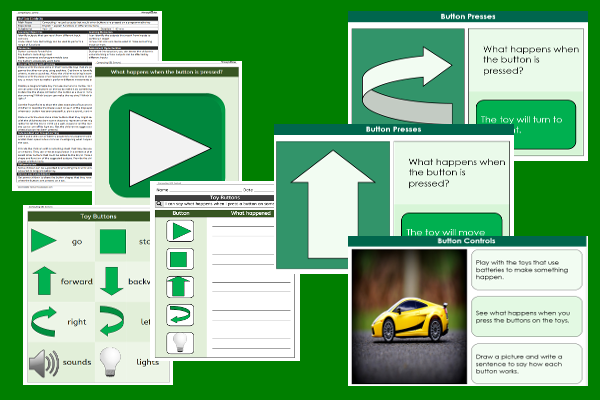Lesson Three – Button Controls

This computing teaching pack for Key Stage One gets the children to identify and record some of the different outputs that can result when a selection of buttons are pressed on a programmable toy.
The class can describe some of the shapes and symbols that can be displayed on different buttons to match their specific functions to create movements and actions.
Download this teaching pack including a lesson plan, classroom activities and an interactive presentation to teach the children to identify and record some of the different outputs that can result when a selection of buttons are pressed on a programmable toy
Activities in this teaching pack include display posters to suggest outputs that could result from different inputs when pressing buttons on toys, a vocabulary word bank to help record the functions of different inputs when buttons are pressed on a programmable toy and a template to identify and record the functions of different inputs using a programmable toy.
The interactive presentation gets the children to explore how to record different outputs that can result when buttons are pressed on a programmable toy.
This lesson is part of a computing scheme of work to get the children to select and record sequences of instructions that can be used to control and move a programmable toy along and around different routes. There are teaching activities for shared learning, differentiated worksheets to support independent learning and interactive presentations to introduce concepts and key skills.
-

Maths Measurement Assessment
Assess abilities in estimating, measuring and comparing a range of different measurements for length, mass and capacity
-

Family Life
Investigate and reflect on some of the special events and experiences that might happen in the life of a family
-

Final Sounds Word Guess
Practise playing some guessing and matching games to identify the spelling and meaning of words with different final sounds
-

Building Reports
Explore how to collect facts and information to work with when composing and presenting non-chronological reports about buildings that can be found in the local area
